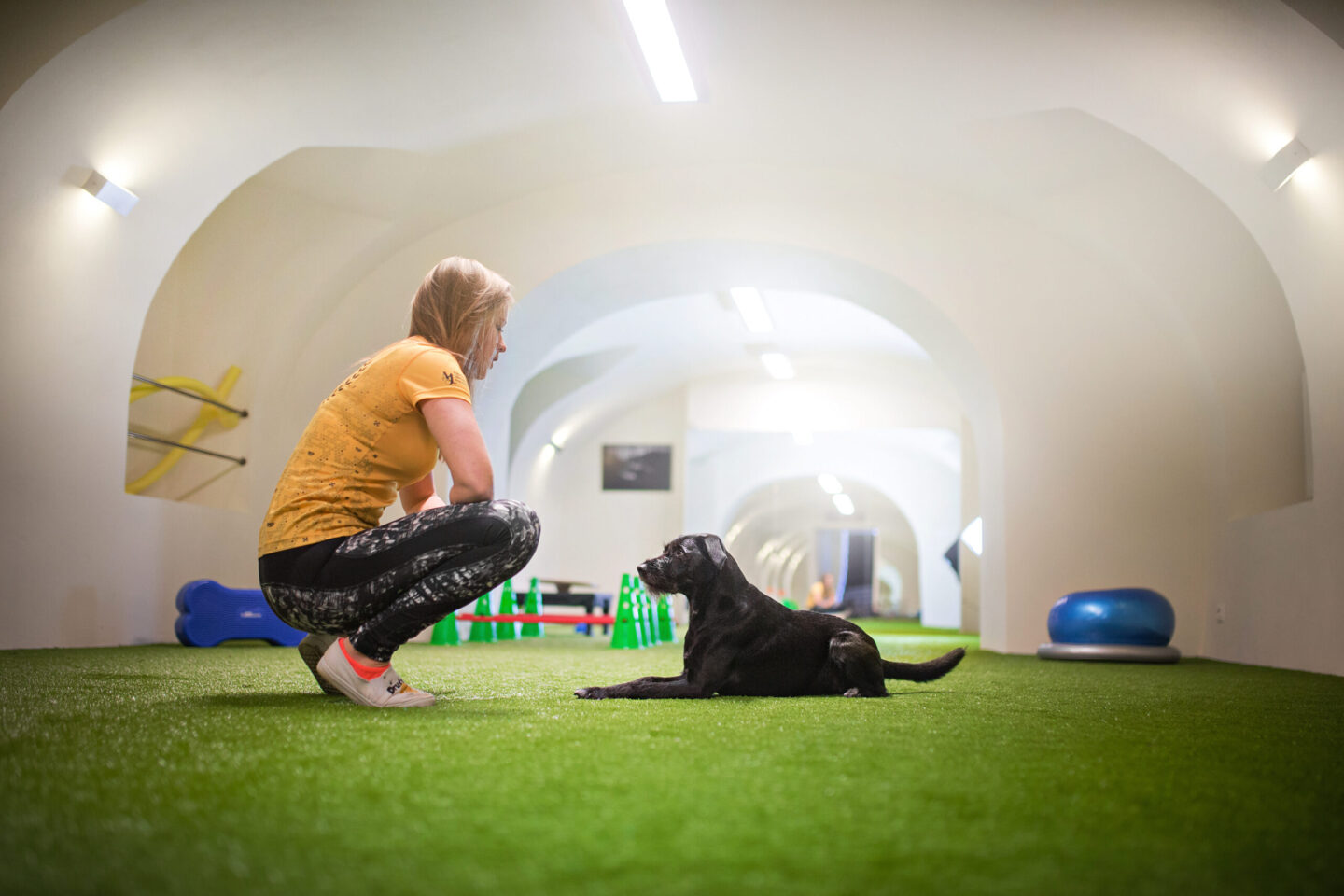Variations in handler’s position
Our typical starting point is the sit position, whether on the floor or a chair. This initial stance grants us better control over the dog’s movements. However, to ensure the future advancement of this exercise, maintaining a straight body position by both the handler and the dog is essential.
Once we’ve established a seamless loop with the desired behavior, my next move involves introducing variations in my body posture. This adjustment occurs before implementing a cue for the behavior or removing any prompts like targets or mats. This phase can prove to be challenging for both the dog and the handler.
In our pursuit of our dogs’ success, we sometimes unknowingly offer subtle cues by leaning forward, nodding our heads, or wiggling our fingers. Although these adjustments might aid in the short run, they inadvertently impede our dogs’ comprehension of the behavior. They begin relying on these slight cues, incorporating them into the behavior itself. Subsequently, when we later introduce a visual or verbal cue, the absence of these inconspicuous signals can bewilder our dogs, leading to difficulties in executing the behavior, especially in competitive scenarios.
This is why our emphasis in this lecture shifts to transitioning to a neutral position. In the realm of obedience, a neutral stance for the handler involves standing upright with arms relaxed and positioned alongside the hips. Once we establish stability in this stance and our dogs consistently perform the behavior without any breaks in smoothness, we can then start integrating a cue.
If you’re still in the process of phasing out prompts, I strongly encourage you to persist in using them to bolster your dog’s success. We will delve into the process of gradually eliminating prompts in week 4.
The example I’ve shared here illustrates the progression I followed with my dog, Gapcio, for the “down from the stand” exercise. Each of these steps typically spanned about 2 to 3 sessions. Remember to advance only when your dog has achieved fluency (a seamless loop) at each stage, and subsequently introduce challenges accordingly.
Homework:
- record a training session for one of the position changes we’ve been working in the past weeks, change your position while you work on offered loop

